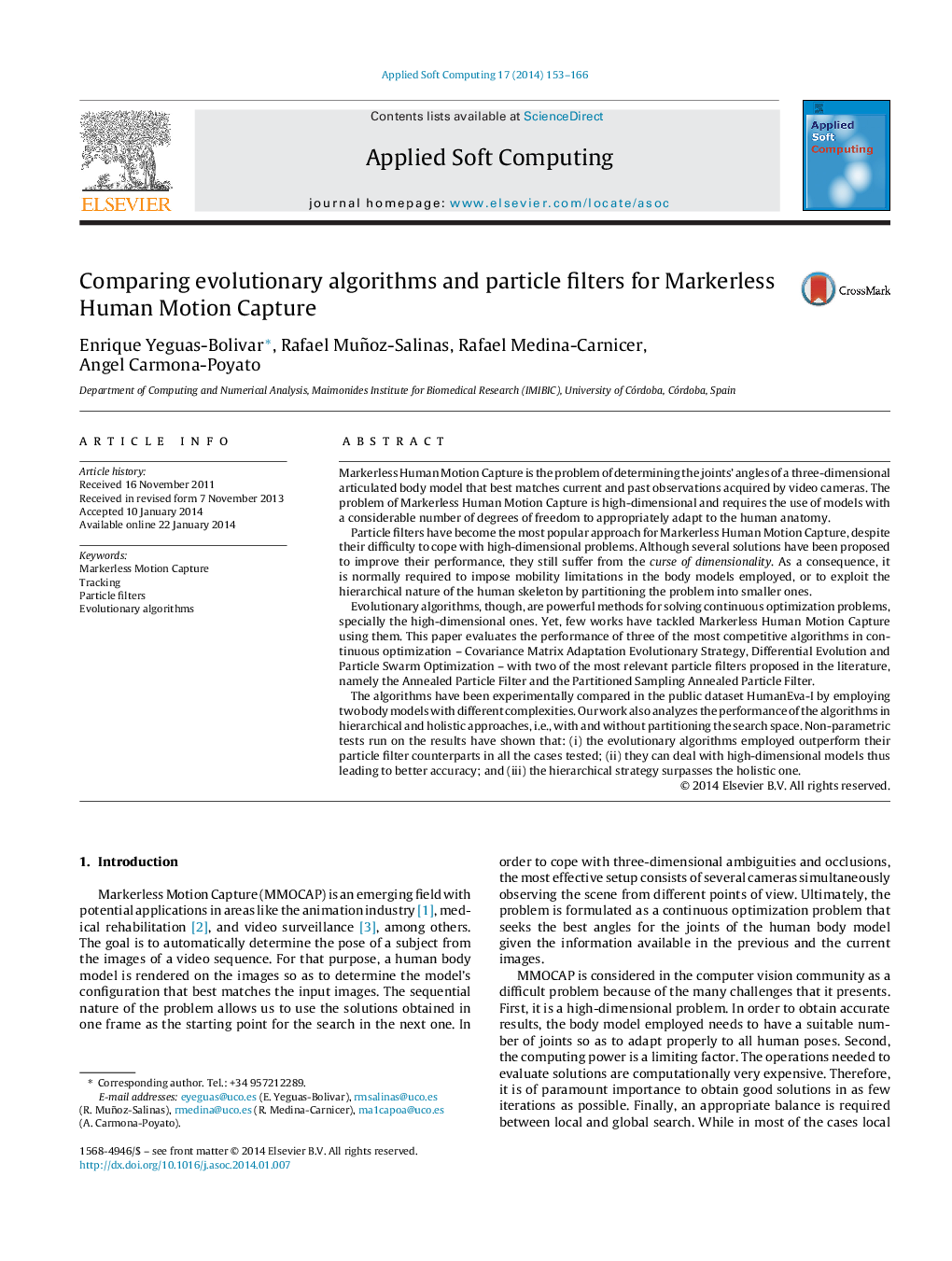| کد مقاله | کد نشریه | سال انتشار | مقاله انگلیسی | نسخه تمام متن |
|---|---|---|---|---|
| 495660 | 862832 | 2014 | 14 صفحه PDF | دانلود رایگان |
• Evolutionary algorithms and particle filters are applied to Markerless Motion Capture.
• Two different body models are proposed and analyzed in the dataset HumanEva-I.
• Two approaches are proposed for the search strategy: holistic and hierarchical.
• Non-parametric tests show that evolutionary algorithms outperform particle filters.
• Evolutionary algorithms and hierarchical strategies deal better with high dimensionality.
Markerless Human Motion Capture is the problem of determining the joints’ angles of a three-dimensional articulated body model that best matches current and past observations acquired by video cameras. The problem of Markerless Human Motion Capture is high-dimensional and requires the use of models with a considerable number of degrees of freedom to appropriately adapt to the human anatomy.Particle filters have become the most popular approach for Markerless Human Motion Capture, despite their difficulty to cope with high-dimensional problems. Although several solutions have been proposed to improve their performance, they still suffer from the curse of dimensionality. As a consequence, it is normally required to impose mobility limitations in the body models employed, or to exploit the hierarchical nature of the human skeleton by partitioning the problem into smaller ones.Evolutionary algorithms, though, are powerful methods for solving continuous optimization problems, specially the high-dimensional ones. Yet, few works have tackled Markerless Human Motion Capture using them. This paper evaluates the performance of three of the most competitive algorithms in continuous optimization – Covariance Matrix Adaptation Evolutionary Strategy, Differential Evolution and Particle Swarm Optimization – with two of the most relevant particle filters proposed in the literature, namely the Annealed Particle Filter and the Partitioned Sampling Annealed Particle Filter.The algorithms have been experimentally compared in the public dataset HumanEva-I by employing two body models with different complexities. Our work also analyzes the performance of the algorithms in hierarchical and holistic approaches, i.e., with and without partitioning the search space. Non-parametric tests run on the results have shown that: (i) the evolutionary algorithms employed outperform their particle filter counterparts in all the cases tested; (ii) they can deal with high-dimensional models thus leading to better accuracy; and (iii) the hierarchical strategy surpasses the holistic one.
Figure optionsDownload as PowerPoint slide
Journal: Applied Soft Computing - Volume 17, April 2014, Pages 153–166
